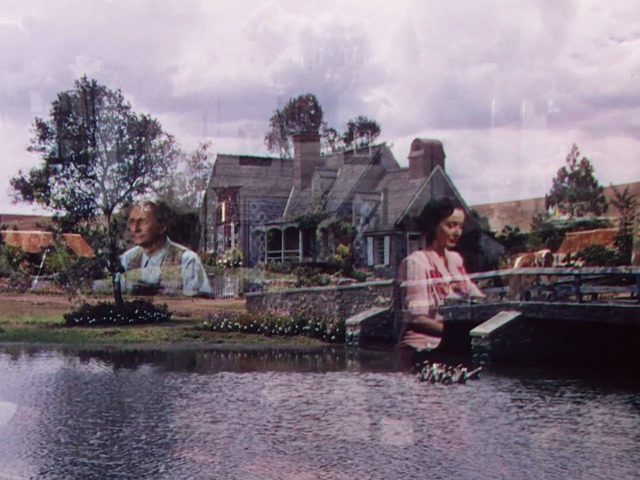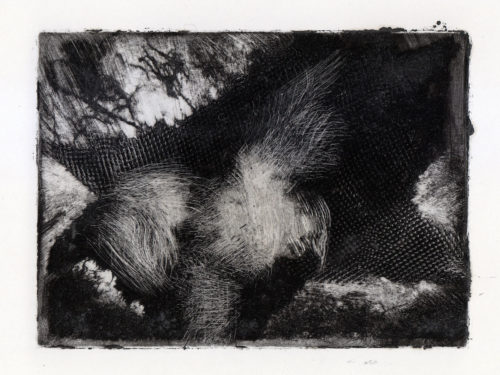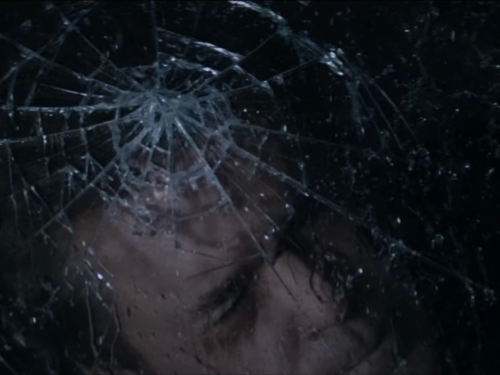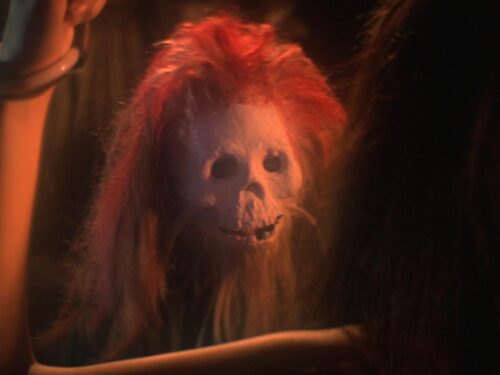Late in his career, Borzage explored film’s potential to give form to the indefinable space of artistic creation
Frank Borzage’s 1946 film I’ve Always Loved You captures art on film by dissolving away the importance of the body and directing the audience to an unseen, but deeply felt, higher plane of existence. It’s not a science fiction or fantasy film, rather a deeply spiritual love story that uses human love as a bait and switch for a larger love. Sounds trippy, but the film is quite clearheaded and purposeful. Music might be the ideal choice to take us to a world of the spirit, since it has no real physical form. Songs are written on sheet music and played on instruments, but neither object is the thing itself. Music floats out there in the air, untethered — you’re halfway there already, just grab the tail of a quarter note and you’re off to the slipstream. Borzage, already a master of using the visible to conjure the invisible, makes I’ve Always Loved You late in his career. The film dramatizes a relationship between two classical pianists, the Maestro Goronoff (Phillip Dorn), and his student Myra (Catherine McLeod). On a human level it’s about how a woman gets control of her powerful connection to art and balances it with love in the human world. On a cinematic level, it’s about how film form can materialize the artistic plane.
The film starts with a group of social elites, dressed in finery, auditioning their nieces, nephews, sons, and daughters to study with the great pianist Goronoff. They each play for him, and to the untrained ear they sound fine, performing their classical pieces without error. Goronoff notices an old friend and a fellow master musician, the humble, plain-clad Frederick Hassman (Felix Bressart) who introduces him to Myra, a modest and beautiful young woman. Myra is here to audition but declines his suggestion of material and says she would like to play Beethoven’s “Appassionata.” Goronoff replies, “I dare you.” He notices her leg shake at the peddle as she begins. Myra plays differently than the others, with great delicacy but also great thunder, making the previous pieces sound like rude clomping. Goronoff is stirred. By setting up Myra’s audition in comparison to the other perfunctory performances, Borzage has trained us to listen closely to that invisible difference that can be felt but not photographed. There’s an air of magic at the end of Myra’s performance when Frederick Hassman reveals the kicker: “She is my daughter.” Frederick was once a brilliant performer, now look to the other side of the stage — Presto! — the gift of the father reincarnated in the daughter. Her reveal opens a window to the place where Myra and her Father got their gift, the place that DNA doesn’t quite explain; that place becomes the focus of Borzage’s direction.
Goronoff follows the Hassmans home where he finds them playing music in the living room of their idyllic country cottage. They have two pianos on either side of their small living space so they can play music together, passing back and forth their call-and-response musical phrases. The cottage is a pastoral dream: farm animals, a large pond, plants crawling over pergolas, flowers blooming everywhere. Borzage locates the birth of Myra’s music in this paradise. Sound and place buoy each other upwards. The color palette is tightly controlled. The young Myra is consistently clad in the pastel pinks and yellows of the floral landscaping. She pops against the soothing grey-blue of the cottage walls. Shades of that grey-blue dominate the film’s backgrounds, and we follow the bright yellow contrast of Myra as if she’s floating in air. Borzage understood how to use color and the natural world to slowly, patiently guide us to a more ethereal realm. In that charming living room, Borzage sets up music as the love between father and daughter, side by side in visual balance with the room and the view of the outdoors coming through their window. A farmer on a tractor toodles by and though it interrupts, it highlights the performance of the light, color, and space Borzage has been conducting alongside the music.

Against the pastoral innocence of Myra’s music is Goronoff’s worldly arrogance. Were he not handsome, passionate, and talented, there would be little appeal. Goronoff sees himself as the creator, not just the vessel of art. He asks Myra to come travel and study under him. Bright eyed about seeing the world, she accepts. In Rio de Janeiro they settle into palatial accommodations that highlight the balance between outdoor living space and tall, open archways leading into the house. At dusk, Goronoff courts another woman outside and has Myra score the evening with piano from inside the glow of the drawing room. The camera privies us to her school-girl crush on her teacher, encouraging our empathy as he uses her to win another woman’s affections. As Goronoff’s flirting escalates, Myra’s playing becomes more passionate, dominating the environment and ultimately derailing the Maestro’s courtship. Myra’s youthful heartbreak is the continuation of her shaking leg in the first scene: innocence under duress. Borzage’s skill is being able to encourage our draw toward innocence and hitch our empathy to the feelings created by the architecture, the color of a dress, the glow of the interior light, and, of course, music to elevate us toward that artistic plane. He locates art in our own original innocence, something that stretches toward the space between our birth and what was before, our death and what comes after.
Related: The Music of Murder: John Brahm’s Hangover Square (1945) by Steve Collins
For Myra’s concert debut, Borzage uses the auditorium space to perform a similar lift, craning his camera across the expanse of the theater until resting on Myra on stage. The disembodied moving camera is an important tool for Borzage to visualize the ineffable. Camera movement is often used to add energy to filmed music, like arcing around a singer or charging into a note from a trombone. Borzage’s camera doesn’t amplify music; it functions like a connector to something else. The movement down to the stage gives off a taste of the floating immaterial. As new agey and airy as one has to get in talking about the effect of Borzage’s work, the directorial focus on every tool creating this lift is rational and exacting.
I’ve Always Loved You is extremely patient in letting musical performance play out on screen. Myra’s debut performance of Rachmaninov runs across a whopping 14 minutes of the film’s 117 minutes. Catherine McLeod was chosen as Myra because of her ability to play piano. The film requires a belief in her as the vessel for this music, a belief that could be toppled with cutaway cheats to a real pianist’s hands. Borzage consistently keeps her face, body, and hands all within the same frame. When compositions do separate them, as in a particularly nimble shot of her hands traversing the keys, we pull back to connect Myra’s face to the flow of her work. In doing so, he lets us absorb the performer becoming the music the same way his camera lets us absorb into the lift of these cathedral-like spaces and ethereal colors. It’s a slow expansion process, like the way a drop of dye spreads in water, or how smoke disperses in the air.
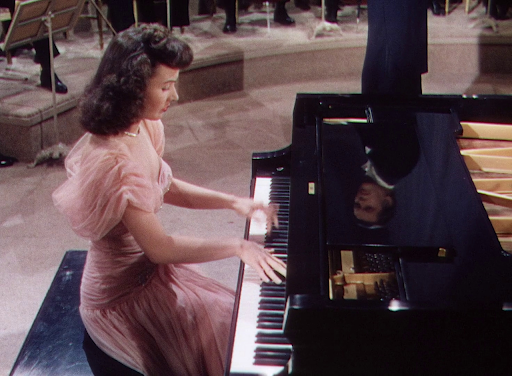
During a previous lesson with Goronoff, when Myra described a musical phrase from a woman’s perspective, Goronoff explained to Myra that, “There is no woman in music.” This slap of artistic chauvinism understandably wounds his young female student. On stage in Myra’s debut, Goronoff realizes this woman has bested him in her ability and begins to retaliate by conducting the orchestra against her. He towers above her at his pedestal in front of the orchestra, in contrast to the balance between father and daughter playing pianos in their idyllic cottage. Myra looks at him with a face of pure innocence. She speaks in voiceover: “Maestro, why are you angry with me?” That connection with original innocence is crucial to Borzage’s design, and yet something so many directors fear. Sentiment is always more risky artistically than degradation and nihilism. Is the problem of translating art to film a problem of looking beauty in the eye? Goronoff’s musical attack of Myra only draws us closer to Myra’s innocence and, in turn, the purity of where her music comes from. Myra’s aching voiceover shows her actually communicating on the artistic plane as if it’s a walkie-talkie; she speaks over that channel as honestly as a child. Until now, only the sound of music floated in this space, and now it’s joined with language, like a ferry boat for us toward another place.
After this concert, Goronoff cannot face the truth and casts Myra away. Myra leaves physically, but cannot let him go. On the night of Goronoff’s concert in Carnegie Hall, Myra stays home and plays passionately in her cottage. A cut matches the music perfectly with a crane shot sweeping across the concert hall into Goronoff on stage playing the same piece. That moving camera again connects Myra to Goronoff. They are linked by a bond that does not adhere to laws of space or time. As proof, George (Bill Carter), a farm boy who Myra left behind for Goronoff, reaches out and holds Myra’s hand, halting her playing. Suddenly, miles away across the transom, Goronoff can no longer perform. He excuses himself awkwardly from the Carnegie Hall audience. Their synchronicity should not be possible. Borzage all but steps into a horror film about possession, using Myra’s and Goronoff’s bodies as marionettes, piloted by the higher force. Borzage posits the existence of the invisible plane by showing its effect. We can’t see the force, but we can see the movement of the marionettes to know it exists.
After this incident, Myra marries George; both Goronoff and her stop playing piano. Time jumps forward, and George and Myra now have a 7-year-old child, Georgette. No longer her full self, Myra’s clothes dim to matronly shades. George wants Myra to return to her gift and asks her to play for their 7-year-old daughter. Myra takes a seat at the piano and plays for the first time in those seven years. Across the country in Goronoffs apartment, he suddenly feels the urge to play and goes to the piano as well. These images of Goronoff and Myra playing are connected with dissolves. Dissolves help slip time, one image slowly replaced with another. If you stop a movie mid-dissolve, at its center is a place that is in between. This is where Borzage is locating art. As Myra and Goronoff play across this dissolve, their seven years of inactivity vanish. They are connecting to something that has no time and no place.

Death, often used as “the end,” is also used as a means of connection. Goronoff’s mother (Maria Ouspenskaya) sits to listen to her son finally play at the piano again. Her finger traces the notes from the written score as her son plays along with Myra so far away. Madame Goronoff reaches the end of a line; her hand quavers, then drops. As the book falls to the ground, she crosses over to the place where the music comes from. We don’t see the closing of the eyes or the sagging of the head, just the hand and sheet music fall. Life dissolves into the music itself. Myra receives the news of her father’s death reading a letter out on the courtyard in Brazil. By a pool of water in the open air and verdant grounds, the space mirrors her pastoral home. We don’t see the death there either, only the look of love on her face. Both depictions of dying take us away from the body of the deceased, into music, into nature, into love.
I’ve Always Loved You makes another jump in time when Myra and George’s daughter Georgette (Vanessa Brown) has grown into a young woman training for her debut at Carnegie. Myra worries that Georgette is not ready for such a bold debut. Her husband, George, suggests seeing Goronoff and having him weigh in on her ability, but also for Myra to confront her past as an artist. And so after many years, Myra returns to Goronoff with Georgette. All this focus on the generational chain shifts our point of view from the present to something more timeless. Each time the narrative jumps forward in time, we are unmoored from the deadlines and goals of the now and drawn closer toward the eternal perspective, the place where art resides. Goronoff is still deeply enamored with Myra, and neither are quite at peace with their unearthly connection. Georgette plays. Now that we’ve been trained to listen more deeply, we can hear she is the one who plays no wrong notes but does not have the gift. Myra’s talent transferred across the mystic from her father, but the gift has not crossed over from mother to daughter. Both the positive and negative results still magnify the power of the gift’s existence. What kind of miracle can be predicted by the passage of some DNA?
Related: The Music of Bad Timing: Joel and Ethan Coen’s Inside Llewyn Davis (2013) by Steve Collins
The climax of the film reveals the Goronoff love story was a red herring – I’ve Always Loved You is about a love with something much bigger. George sits down in the Carnegie Hall audience and sees Myra come out to perform instead of his daughter. Goronoff is conducting. Georgette happily joins her father in the audience, relieved to dodge the performance, both father and daughter proud to see the woman they love on stage. Myra plays the Rachmaninov that was used against her so long ago. Now she dominates and Goronoff follows her lead. In her triumph, Goronoff looks to her in close up and communicates with voiceover, “I was wrong. There is woman in music.” Goronoff realizes that his gift is not his alone, that they are vessels for something bigger. Myra realizes the opposite, that her artistic gift is part of her and she doesn’t have to deny it to have a normal life. Both stories are dramatizing a primary issue of art on film: that it both is and isn’t located in the artist. This is what makes films about artists so difficult — the real subject isn’t really there. They have the same issues as films about religious faith. An attempt to record the life of the artist that only looks at facts and personality will never really grasp what all the fuss is about.
Art is not an occupation; it’s an obsessive love that’s hard to balance with an earthly life. What Borzage solves that so many filmmakers fail at is won from his fearlessness to venture across the invisible veil and come back with a solution. How would Borzage have survived in an era where culture glues its eye to the now and what is “trending?” He succeeds in translating art to film because he does not pay too much respect to the mortal plane. If one earnestly seeks to make, translate art, or experience art, one must stare beauty in the eye and confront the eternal. In the last moments of the film, Myra goes to her husband waiting off stage and embraces him for his support, even if it meant sending her to his rival. In that embrace, she declares the title of the film to him, and not, as one might have assumed, to Goronoff. It’s the final breakthrough in this rare reenactment of a woman’s struggle to balance romantic love with her own artistic power. Films about artists usually fall into tragedy. Borzage gifts us a rare case where the mortal and the eternal fall into balance. Harmony.
Watch I’ve Always Loved You on YouTube or rent in on Amazon Prime
Stay up to date with all things Split Tooth Media and stream Steve Collins’ latest film, I’ve Got issues.
(Split Tooth may earn a commission from purchases made through affiliate links on our site.)

